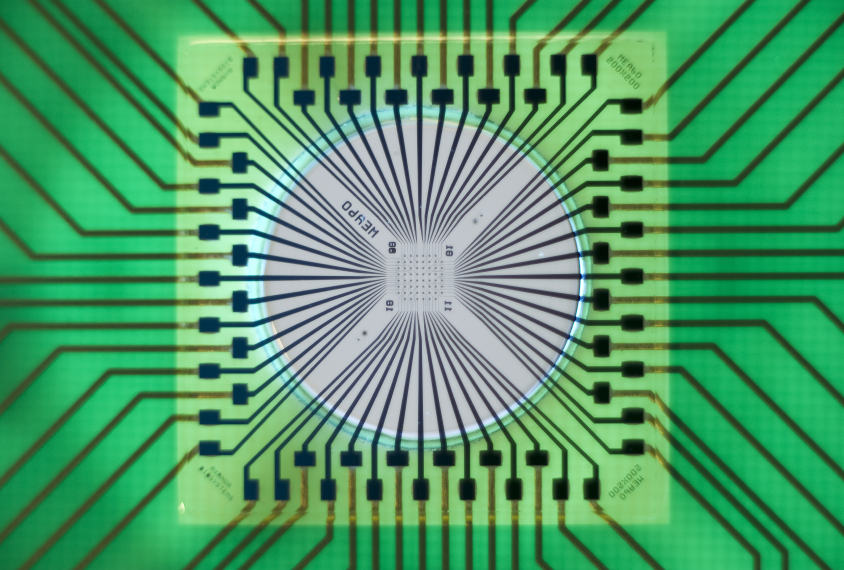
Philippe Psaila / SCIENCE SOURCE
THIS ARTICLE IS MORE THAN FIVE YEARS OLD
This article is more than five years old. Autism research — and science in general — is constantly evolving, so older articles may contain information or theories that have been reevaluated since their original publication date.
Small plates studded with miniature electrodes can reveal firing patterns across large networks of cultured neurons. The ‘hot plates,’ described in the February issue of Molecular Psychiatry, could help researchers understand how autism-linked mutations affect brain circuits1.
The plates are small cell-culture dishes with electrodes embedded in a glass base. Researchers can grow a layer of interconnecting neurons on each plate. The neurons spontaneously signal to each other, as they do in the brain, and the underlying electrodes capture their activity and transmit this data through a receiver to a computer.
Researchers have used these plates to reveal how mutations in the autism-linked genes FMR1 and TSC1 change firing patterns in individual neurons2,3.
In the new study, researchers developed algorithms that allow them to chart patterns of synchronous firing among thousands of neurons from mice lacking SHANK3, an autism risk gene. Some researchers hypothesize that autism stems from a signaling imbalance caused by problems with neurons that dampen brain activity, known as inhibitory neurons. Scientists could use the new approach to test this theory.
Treatment tests:
The algorithm revealed fewer bursts of electrical activity from excitatory neurons in the networks of cells lacking SHANK3 compared with controls. More significantly, however, the researchers detected evidence of a subtle problem with the firing of inhibitory neurons in these networks.
All the networks they tested show alternating periods of activity and of rest. But those from mice lacking SHANK3 have unusually short inactive periods, a pattern consistent with having immature and less robust inhibitory neurons.
Treating the neurons with clonazepam, a drug that boosts inhibitory signals and alleviates autism-like symptoms in mice, normalizes the firing pattern.
The researchers aim to scale up such drug tests by exposing hundreds of neural networks to potential treatments. The hope is that certain groups of autism-linked mutations lead to consistent deficits that would be amenable to the same treatments, says lead researcher Guoping Feng, professor of brain and cognitive sciences at the Massachusetts Institute of Technology.
“Our goal is to develop high-throughput assays so we can screen for thousands of these mutations and make a catalog of cellular phenotypes,” says Feng.
By joining the discussion, you agree to our privacy policy.